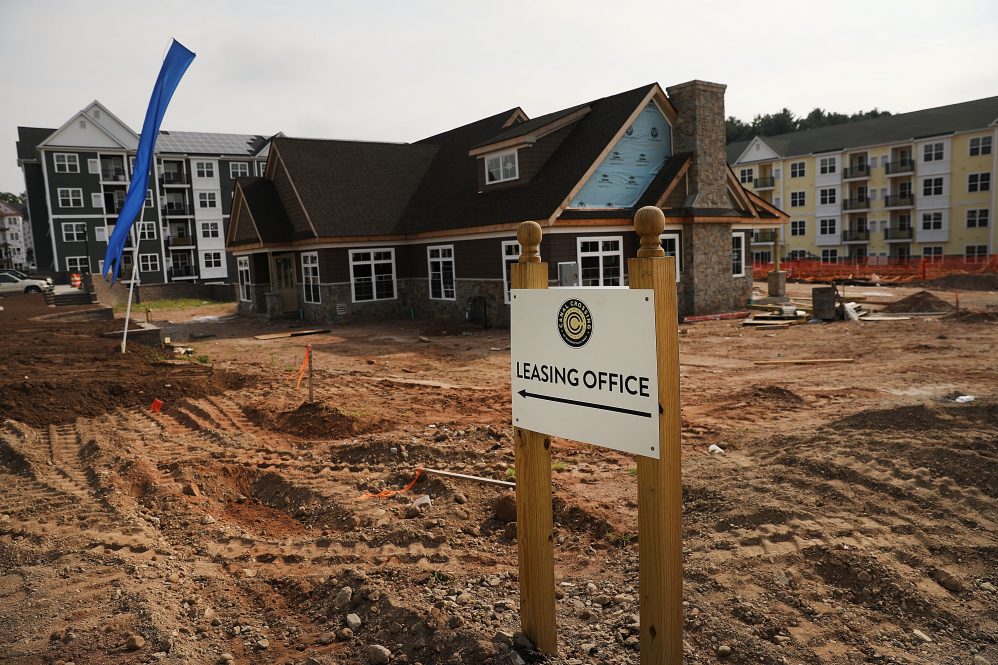Developers are planning to build thousands of new apartments across Connecticut, tapping into an exploding need for more housing options for everyone from millennials to empty nesters.
“There has really been an unprecedented demand for modern rental housing, not only in Connecticut but in many places across the nation,’’ says Jeffrey Cohen, finance professor and the Kinnard Scholar in Real Estate at the School of Business. “We’re seeing some complexes being developed on empty parcels and many other unused properties being converted into apartments.’’
In the past, many apartments were simply four walls and a roof overhead, with few amenities, Cohen says.
“That has all changed. Renters are looking for more luxury features, such as gyms, pools, or walking paths, as well as convenience to shopping, work, and other amenities,’’ he says.
Cohen recently spoke with UConn Today about trends in the industry.
Why are we seeing such tremendous interest in creating new housing options?
In Connecticut, and elsewhere, there is a shortage of places to live.
In the past, many people viewed apartments as a temporary shelter while they saved for a modest, starter home. In 1982, some 40% of the country’s newly constructed homes were entry-level, meaning they were 1,400 square feet or less; by 2019, the number had fallen to 7%. So, the apartment demand reflects the overall turbulence in the housing market.

In fact, GlobeSt.com, a leading source of news in the commercial real estate community, reported three months ago that the magnitude of the apartment demand is far beyond the most optimistic forecast. Apartment vacancies hit a historic low last year to 2.7%. New lease demand had increased more than 50%, and resident retention was equally strong, surging to 58%, an all-time high.
According to mortgage giant Freddie Mac, the nation is nearly 4 million homes short of demand. The combination of soaring housing prices and limited inventory has caused people to stay put in rental housing.
There are social factors at play, as well, including college debt, delaying marriage and children, which are preventing people from wanting or needing a new home. Furthermore, millennials may be competing with wealthier empty nesters for smaller homes.
And lastly, the pandemic has refocused the priorities of many people and caused them to reconsider where and how they live. Many people are waiting for the pandemic to end before searching for a home to purchase, which means they are staying in apartments longer.
What are some of the bigger apartment projects under construction in our area?
There are far too many to list, but almost every town has something new in development. In Farmington, for example, a builder is turning the former Hartford Marriott Farmington hotel into 224 apartments. The property, which sold for more than $21 million in October, is close to Interstate 84 and Route 6.
Another 107-unit apartment building is under development in downtown New Britain, with plans to construct more next door at the site of the former Amato’s Toy and Hobby building. The complex is located close to the CTfastrak bus line.
In East Hartford, developers are considering building 360 apartments at the site of the former Showcase Cinemas along Silver Lane and adjacent to I-84. The first-phase of the $80 million project involved demolishing the old theater.
Another large apartment building is under construction in Hartford, adjacent to Dunkin Donuts Park. More than 200 units are expected to open next year and, I imagine, will draw interest from baseball fans and many others.
Meanwhile, in West Hartford, developers just announced plans to convert the former Children’s Museum property, which borders Blue Back Square and West Hartford Center, into an upscale apartment complex.
And in Newington, plans are underway for 238 apartments near the CTfastrak station on Cedar Street. The proposal includes a large garage, swimming pool, and easy access to the busway.
Easy access to transit, like CTfastrak and CTrail, is encouraging some developers to build near the stations. Many people really like the idea of ditching their cars and relaxing on a transit ride. With the recent federal infrastructure law, we will be seeing more funding for rail improvements along the I-95 corridor, which will make it even easier for people to avoid the heavy road traffic and get places faster. Building apartments near these stations is a great way to make it easy for people to live close to rail and transit.
Are renters seeking different amenities in apartments and condominiums than they did 20 or 30 years ago?
Absolutely! Today’s renters are demanding more high-end amenities, including fitness centers, swimming pools, covered parking, and in-unit washers and dryers. Because people are staying in rental units for several years, or more, they want comfort, convenience and some of the nicer touches that you’d find in a permanent home. This also includes covered parking, for many of the higher-end developments.
Is there still a shortage of building materials and will that impact these projects?
Yes, there is a shortage of building materials and that, coupled with increased labor costs, has driven up the costs of construction. Those factors, plus high demand for apartments, will continue to increase apartment rental prices. I expect this trend to continue as long as supply chain shortages and challenges are with us. Hopefully, these will ease soon, but there is a tremendous backlog of materials that need to be delivered.
How important is it for thriving areas to have a strong supply of housing options?
If having good jobs is the top way to attract and retain people, having great housing options is a close second. These two factors are often intertwined, as many young people prefer the convenience of working, living, and socializing nearby, making a city the best option.
The pandemic has played a role in the interest in Connecticut. If people who worked in New York City or Boston are able to switch to remote work, Connecticut becomes enormously appealing. Our cities offer a more affordable lifestyle than, say, Boston or New York, but offer a relatively easy commute for someone who “needs to be at headquarters” every month or so. In many ways, we offer the best of both worlds.
Just this week I was teaching my real estate students that transportation costs to a major city center are a key driver of property values. With remote work, this transportation cost of “getting to work” is close to zero almost anywhere you choose to live. This helps to drive up the house prices in places further out of large metropolitan areas, like Greater Hartford. We have also been seeing significant numbers of New York City residents move as far north and east as Maine. Part of this is to try and get into a more affordable starter home with a big yard for their kids and space for a home office. But a big part of it is that they don’t have to commute to and from the big city every day – their transportation costs are almost nothing!
Is it possible that this trend will lead to the over-production of rental property? How will we know when enough is enough?
It’s always possible that there could be over-building of apartments. Part of it depends on the local trends. Just two years ago, houses in Connecticut were easier to get, but more recently sellers have been getting multiple offers, some of which are above asking price. Apartments can be like cell phone parking areas at the airport – you stay there for awhile to wait until a flight lands. When more people see their flights land – and they get to buy a home – there might be too many waiting areas left. The end of the pandemic – if it ever comes – will help us see what the horizon looks like for the future of apartments. Hopefully that will happen sooner rather than later, but there are always a steady stream of college grads and empty nesters looking for shorter-term housing.
Many of our readers are young adults looking for a first apartment or perhaps for a better one. Do you have any advice for young adults as they start their search?
In a tight market for apartments, resist the temptation to grab the first one you see. But also realize finding an apartment is like going on a date – you won’t be with it for the rest of your life. Buying a house is a more long-term commitment – so make sure you take your time and don’t jump into a house just because it looks like your “dream match” might not come along for a while. Patience is crucial with real estate!



